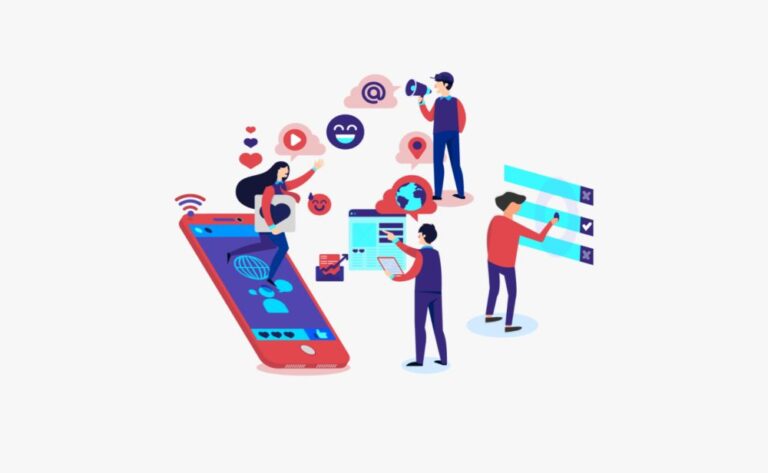How to Make Your Site Secure: A Guide for Non-Technical Marketers
Because of the rapid development of technology, there is a specific challenge that we are all currently confronted with, and that challenge is maintaining the confidentiality of our personal life.
And while each of us can take steps to make it more difficult for others to steal our private data (such as using two-factor authentication where it is available, keeping our passwords secure, etc.), the problem that website owners, developers, and marketers face is more difficult.
We need to keep our site visitors and users safe.
You will see that our customers and site visitors have faith in us. When people check out our website, there’s a good chance that they’ll fill out one of our forms, install one of our scripts, or download one of our pieces of software.
What would happen, though, if someone hacked into your website and all of those invitations were not sent from you but rather from the hacker, who would now have ownership of all of that information?
What would you do in the event that one of your devoted clients falls victim to identity theft merely due to the fact that you failed to protect them and their information?
Because of this, a data breach is not just a nuisance for you; rather, it is a crisis for your reputation and may even be a liability for your company.
The statistics on cybercrime are really disturbing:
• One person loses their identity every ten seconds, according to Aura (Open Link in new window); • The amount of cybercrime grew by 600% owing to the COVID-19 epidemic (Open Link in new window);
• According to the findings of a study conducted by Sucuri (Open Link in a new window), out of 8000 malicious websites, three quarters were powered by WordPress.
• Approximately 4,800 websites are hacked every single month and infected with code that allows for form-jacking. (Open Link in a New Window)
Even if you are not yet persuaded, you should know that safety is a ranking indication. Because of this, Google mandated that virtually all websites make the switch to the HTTPS protocol.
The following are some of the actions that you need to do in order to make your website (and the personal information of your users) more secure:
1. Check to see that the hosting service you use is safe.
Because your hosting provider is the target of a significant number of malicious attempts, you need to ensure that it is taking all of the required precautions to keep your website secure.
2. Authenticate your website with Google using the Google Search Console.
If you needed one more incentive to validate your website with Google Search Console, here it is: this is one of the quickest malware alert systems that are currently available. In addition to that, there is no charge whatsoever.
The Google Search Console makes use of the safe surfing API (Open Link in a new window), which warns website visitors about the presence of potential malware threats. Additionally, the majority of web browsers use it (including, obviously, Google Chrome). Users are typically presented with a warning when they are attempting to access an infected website because of the API.
Concerns about safety Google provides reports to the owners of websites. They can be broken down into three primary categories, which are as follows:
• Malware and undesirable software are two things that might cause problems for users of your website by infecting the devices they use.
• Hacked content: when content from a third party, typically links, is introduced to your website. • Social engineering: this type of attack encourages users of your website to reveal their personal information.
In addition to this, Google offers clear and concise directions on how to resolve each of the problems it has identified. The speed with which these reports identify and report on issues is, once more, the most valuable component of these reports.
In addition, Google will report on any problems with your SSL (Secure Sockets Layer) and TLS (Transport Layer Security) protocols, both of which are indicators of potential security flaws (Open Link in new window).
You are able to detect security flaws in your setup and content management systems using a wide variety of additional security scanning tools, in addition to Google’s Search Console (Open Link in new window).
3. Be sure to monitor the traffic from bots.
What is meant by “bot traffic”?
Bot traffic refers to any traffic to a website or app that does not originate from real users. The use of bot traffic is not always a bad thing. The term “bot traffic” refers to automated crawlers, such as the one used by Google, as well as digital assistants (Siri, Alexa, etc.)
An increase in the volume of visits from bots can indicate that there is an issue.
This issue could be:
• The start of a distributed denial of service assault (this is when a massive amount of traffic is being sent to kill your servers)
• Credential stuffing (when bots attempt to guess your backend login information)
• Data scraping (when your content is being automatically copied)
Finteza is a handy tool that detects and notifies you of bot traffic surges (Open Link in new window), which may signify the beginning of a problem. (Open Link in new window)
These reports are beneficial since they provide you with additional information that can be discussed with your developer and/or hosting provider. They will inform you of the type of bot traffic that is increasing as well as whether or not there is a reason for concern.
Conclusion
Maintaining the safety of your website is one of the key aspects of your online presence that is of the utmost significance. Don’t put off dealing with issues until it’s really too late. Make use of the simple measures that were provided above to prevent some difficulties and build mechanisms to quickly remedy any security breaches and reduce the effect of these occurrences.







